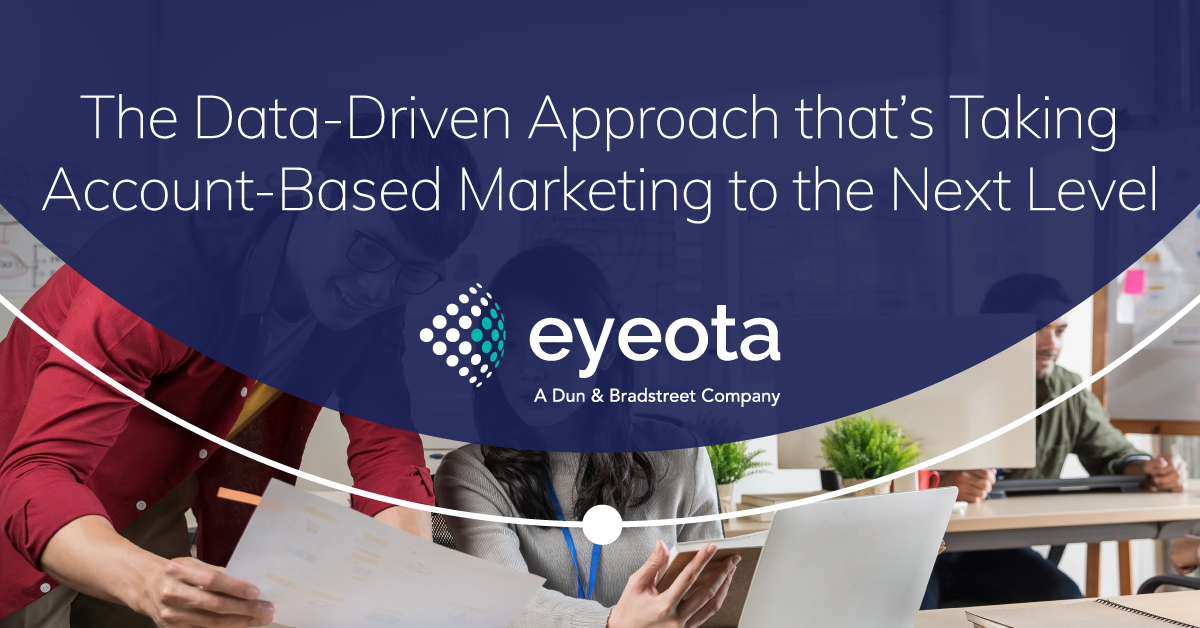Picture this: A global enterprise is launching a new product. As they’re getting ready to launch, they know they need to target the right people, at the right time. They require a strategy that’s data-driven and personalized. And they want it to be easy to implement so they can focus on their core business challenges. After all, who wants to waste time marketing to unqualified leads that don’t have the budget or authority to buy?
Enter account-based marketing (ABM). It’s a digital marketing strategy that helps marketers identify, target and engage with their ideal business customers. But there's a way to take it from good to great. Let's get started with the basics and then we'll dive into the secret that takes ABM to the next level.
What Is Account-Based Marketing?
Account-based marketing is an always-on strategy that allows businesses to engage with their target B2B account prospects through personalized content and messaging across multiple touchpoints. ABM aligns marketing and sales teams to focus on the highest-value accounts.
By eliminating the guesswork and treating each account as an individual market segment, companies can increase their sales pipeline, decrease lead-to-close time and improve customer satisfaction. Additional benefits of ABM include:
- Higher quality leads: Since ABM campaigns are hyper-targeted at a business' account list, every lead generated is valuable and has the potential to convert — which means better ROI.
- Optimized customer experience: Distributing timely personalized messages keeps prospects moving through the sales funnel seamlessly.
- Stronger relationships with clients: By using ABM to nurture prospects who are ready to buy, companies can build trust and credibility with their target accounts. Furthermore, by engaging with their audience at the point of renewal, companies can get ahead of cross-selling and upselling opportunities.
Types of ABM Campaigns
There are three types of ABM campaigns, and marketers can use them individually or in combination to maximize the effectiveness of their strategy:
- Classic ABM: The marketing team identifies the accounts they want to target, and then engages with them via one-to-one targeting through content and messaging. This is a great way to get started with ABM and strategically reach new contacts within existing accounts. Doing so helps generate new business and strengthens existing relationships.
- Full Family-Tree ABM: Marketers identify clusters of accounts that share similar attributes, and then use those as criteria to reach the full corporate hierarchy via one-to-few targeting. This is a more intricate method of ABM that works best to maximize a business's relevance and drive deeper engagement with prospects.
- Look-Alike ABM: Companies increase their campaign scale by targeting look-alike audiences using first-party data, which enables marketers to reach prospects that over-index on their criteria. This strategy is highly efficient at placing companies on new accounts' radars via one-to-many targeting.
The Secret To Accelerating ABM Campaigns
The successes of ABM are undeniable. The ability to target high-value accounts, with a tailored message and a personalized experience, is exciting for both marketers and sales teams. At the same time, ABM is a strategy that requires careful planning and execution to get right — and it can be a challenge to hit the mark on the first try.
The secret to accelerating ABM campaigns is to focus on the right data. By using first-party data, marketers can identify accounts that are a good fit for their products and services, and then create targeted campaigns that resonate with prospects. Once they have an understanding of who the best prospects are, marketers can then use third-party data to customize each campaign further.
This data-driven approach helps marketers to get their campaigns off to a fast, effective start — and it makes it easier for them to identify the best-performing content. Moreover, by partnering with the right vendor, marketers can rest assured that their ABM campaigns are optimized for maximum conversion.
Sell to Your Ideal Customers Using Eyeota and Dun & Bradstreet
Eyeota and Dun & Bradstreet’s audience segmentation and intelligence technologies allow businesses to complement their ABM targeting strategy with third-party data to create a holistic, centralized approach that simplifies the complex relationships inherent in B2B marketing.
Our clients gain access to pre-qualified company lists of existing customers based on intent signals and behavior, allowing them to create highly targeted campaigns that resonate with prospects. Additionally, our solutions include corporate linkage and intent indicators to help companies expand their scale and leverage audiences that are actively researching them.
Some more examples of how B2B audiences can be segmented using Eyeota include:
- Decision-Makers
- Employment Type
- Firmographics
- Buyer Intent
- Interests
- Technographics
However, our third-party data can also help marketers amplify engagement with the following targeting options:
- Keyword-specific destination audiences
- Competitor targeting
- Tailored customer profiles
- 7-day cookie refresh
We source and curate our data from 40,000+ independent resources, which are updated millions of times per day and matched to our unique identifiers. This way, we ensure that we provide our clients with the most accurate, up-to-date and reliable data possible — resulting in added value for the brands we work with.
To learn more about how Eyeota's data solutions can help marketers leverage the power of data to reach a highly engaged audience and meet specific campaign objectives, contact us or connect with one of our audience specialists directly.
